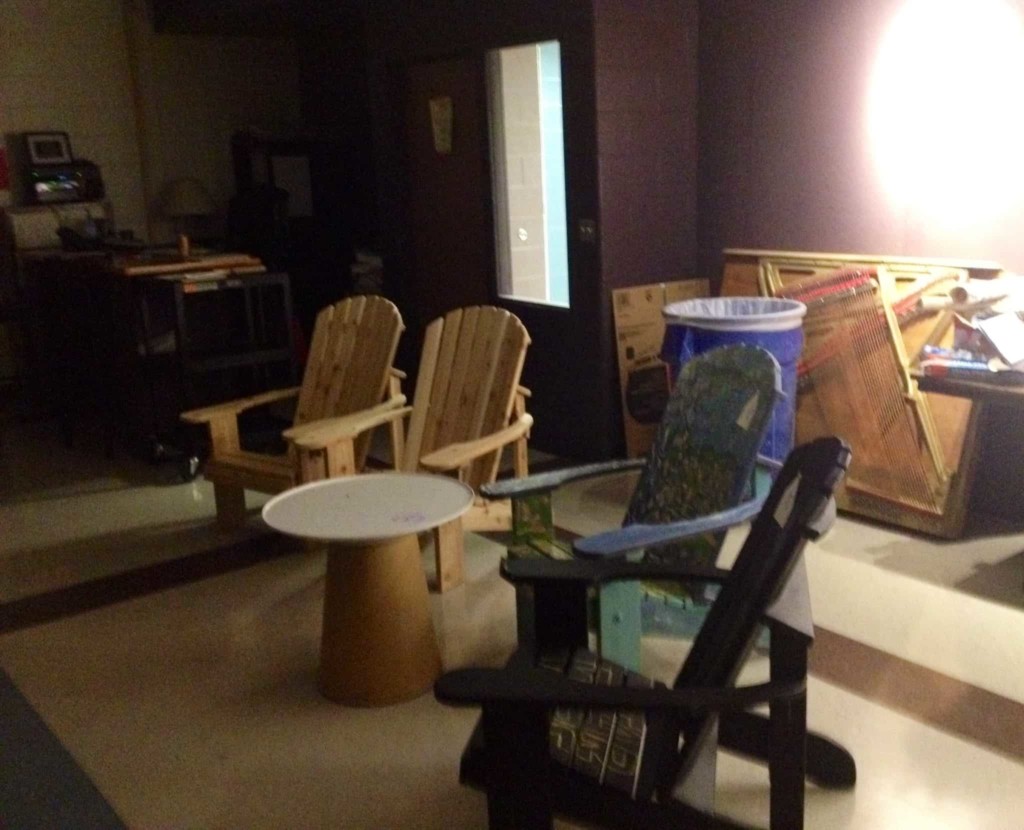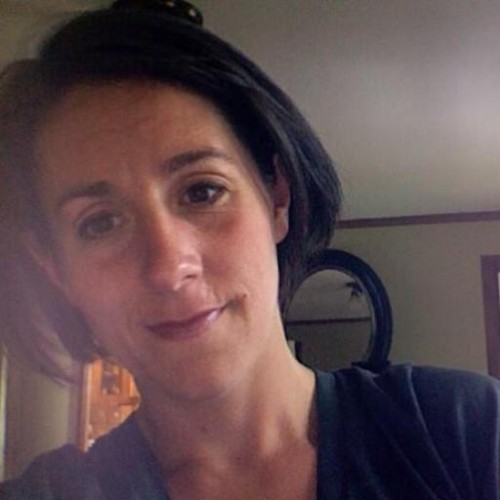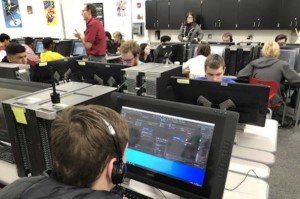Learning From Charters to Shape a District

Kettle Moraine School District’s vision statement reads, “Our Vision is LEARNING WITHOUT BOUNDARIES and our purpose is TO CULTIVATE ACADEMIC EXCELLENCE, CITIZENSHIP, AND PERSONAL DEVELOPMENT.” After a visit to the district, it’s evident that “without boundaries” shapes their vision as well as their daily practice.
Superintendent, Pat Deklotz and assistant superintendent of Teaching and Learning, Theresa Gennerman hosted our tour of the three charter schools that have developed right inside their traditional elementary and high schools. Pat believes “The purpose of our schools is to engage students in meaningful and rigorous learning experiences, preparing them to be College and Career ready by the time they graduate.” It is exciting to see that her district schools are accomplishing this, but through multiple pathways. In the past few years, they have opened three charter schools: 2 in Kettle Moraine High School and one opening just this 2013-14 school year, inside Wales Elementary School.
KMExplore (Kindergarten-5th grade)
The buzz of fully engaged, happy students hits you the minute you walk in the door. KMExplore has been open for a little over a month but the K-5th graders who attend this school seem to have transitioned seamlessly. Most everything about the school looks different than the traditional elementary school model:
-
Classroom walls were removed to create huge, connected spaces for the multi-age classes. Where once doors and hallways separated each grade’s classroom, they now flow together harmoniously. It’s not just one big open room. The space is innovative and purposely designed to give students opportunities for movement, to create, to explore, to study and to develop strong collaborative skills.
-
The furniture is real and full size, donated by parents or local businesses. The huge open common area dubbed the “Dragon Den” is full of big, adult scale chairs that the students can arrange and use anyway needed. A quick look around the room proves that students certainly seem happy to stay comfortably focused on reading in a plush and comfortable chairs, as compared to small, hard plastic desk chairs. Inside the classrooms, students work together on projects at full size kitchen tables or on couches donated by families or community members.
-
Project Based Learning naturally occurs- is student directed and teacher supported. The rooms are already filled with evidence of great finished projects, as well as many projects underway. So many artifacts fill the rooms, it’s hard to believe the school has really been in operation for only about a month.
-
The students, teachers, staff, volunteers… really everyone we encountered radiated the positive energy that establishes the type of school culture everyone wants for their own students- where both teachers and students are leading their own learning and allowing for inquiry to direct and authentically engage every student in the room.
KMGlobal (grades 9-12)
Mission: To cultivate a global perspective through academic excellence, active engagement, and development of leadership identity.
Inside KMGlobal, nothing looks like one would expect from high school except the students themselves. Director Michele Koper and a few impressive students described KMGlobal’s model for us and how it looks everyday:
-
Instead of a set schedule of 7 periods, students here work with advisors to make their own schedules, that really ends up looking more like college. They continue to meet with their advisors in one to one meetings twice a week to be sure they are on the right track.
-
Cohorts, as opposed to age based classes are formed in the different subject areas. In addition to earning all their credits for graduation, students chose to focus on what they want, when they want and how they want to learn it.
-
The entire student body comes together on Tuesday afternoons to work on interesting projects. For example, last week they worked on how to advise President Obama on actions in Syria. The week before that they dove into Global healthcare and what that could like like.
-
Students create, complete and then defend their personal learning projects. They decide what they want to study for an entire semester and how it can apply to a career of their interest. After a few weeks of thinking in depth around what they would like to commit to learning about, students write a proposal, meet with a learning coach to ensure they meet the learning targets across the curriculum and that the credits they need are there. The project always includes multiple learning artifacts, including papers, documentaries, websites, posters, etc. and students showcase their learning to their peers, parents and community members through their presentations. Lastly, they are required to defend their learning to a panel of teachers and advisors, the last step and truly the step the ensures they’ve solidified what they’ve learned.
-
Online content and resources allow students total flexibility and ownership of their learning. They don’t have to wait for class time with teachers, they have access 24/7 to the learning content. Most of the content is created by the teachers at Global themselves, while some is supplemented, like Rosetta Stone for learning foreign languages. Because so much is project based, Project Foundry is a natural fit for students to track their projects and their progress, as well as tap into supporting resources available online.
KMPerform (grades 9-12)
 KM Perform “emphasizes hands-on-learning, providing a highly relevant stage for production and expression of student learning. Through authentic performances, students will engage in a rigorous academic curriculum and graduate prepared to achieve in college and a competitive workforce that demands creativity and collaboration.”
KM Perform “emphasizes hands-on-learning, providing a highly relevant stage for production and expression of student learning. Through authentic performances, students will engage in a rigorous academic curriculum and graduate prepared to achieve in college and a competitive workforce that demands creativity and collaboration.”
Kettle Moraine High School has always been known for its strong arts program, so how do you build a Performing Arts Charter without taking away from the foundation was a big question for Kevin Erickson, KM Perform director. Instead of siphoning from them, KM Perform just built an even stronger program, allowing students to master the arts to new found depths. In order to do this, the school day looks very different for Perform students than it does for the traditional high school student:
-
students usually finish their foundation courses, the courses they need to graduate, in about two years- leaving the last two years of high school to dive deep into the performing art they choose to focus on such as creative writing, theater, music or the visual arts.
-
the school spaces are intentionally designed to function in multiple capacities. The commons area turns into a performance space, the art studio can transform into a gallery for art shows in the evening.
-
Teachers are also multi functional- they are not only experts in the field of content they teach, but have the freedom to teach other subjects that fall into their scope of interest. Teachers have the same freedom allowed the students to engage with what truly interests them. Plus, observing a theater teacher put “scope and scale” into context for the math students proves how easily the world can and should come together and make sense for students. Engaged, enthusiastic teachers produces the same result in students.
-
Students design projects informed by the curriculum and experts from the community who are involved and want to contribute to students success. They have their choice of courses, seminars, workshops and field experience to compile an extensive and highly personalized portfolio. Students leave Perform with a strong mastery and appreciation for the arts, a contextual understanding of English, Math and Science and the developed emotional intelligence needed to succeed at the college level.
Technology’s Role
 Krista Moroder, the K-12 technology integrator for the Kettle Moraine District was named Outstanding Young Educator by ISTE this past school year. Rightly so because the overarching umbrella of technology supporting the teachers and students in so many capacities pushes all the KM schools from good to great. The shift from relying on textbooks to online resources is evident from lower elementary up to high school. Students use a wide variety of devices throughout the day and at home. Learning is not confined to the classroom. A large cohort in the Middle School is using Google apps to pilot going paperless this year.
Krista Moroder, the K-12 technology integrator for the Kettle Moraine District was named Outstanding Young Educator by ISTE this past school year. Rightly so because the overarching umbrella of technology supporting the teachers and students in so many capacities pushes all the KM schools from good to great. The shift from relying on textbooks to online resources is evident from lower elementary up to high school. Students use a wide variety of devices throughout the day and at home. Learning is not confined to the classroom. A large cohort in the Middle School is using Google apps to pilot going paperless this year.
With 4 elementaries, a middle school, a high school and three charters to support, Krista can’t connect with each teacher every day. Using her Google Certified teacher/trainer expertise, she has set up a network of self directed professional development for the entire staff. Using a template in Google sites, each teacher is creating their own website as a jumping off point. Teachers are not only mastering Google apps for themselves but setting up sites for student projects and portfolios. The effective use of digital technology is spreading throughout the KM school district because staff and students are learning and supporting each other as they work to master new tools that elevate everyone’s learning.
It’s very obvious the learning is not confined to 4 classroom walls in the Kettle Moraine district. It is just as obvious that learning is not strictly designated to the students. This community is learning together, everyday- from the Superintendent, to the tech integrator, to the charter directors, to the teachers, the staff- no one is afraid to learn new concepts and apply them.
Plans for the next charter focused on Health Sciences are in development. Using what they learn from the charters to inform what is happening in every classroom in the district is key. A community, supporting each other in this journey has put these schools on fast trajectory towards transforming to meet the needs of every student and provide each one with the personalized instruction needed for true life success.






0 Comments
Leave a Comment
Your email address will not be published. All fields are required.